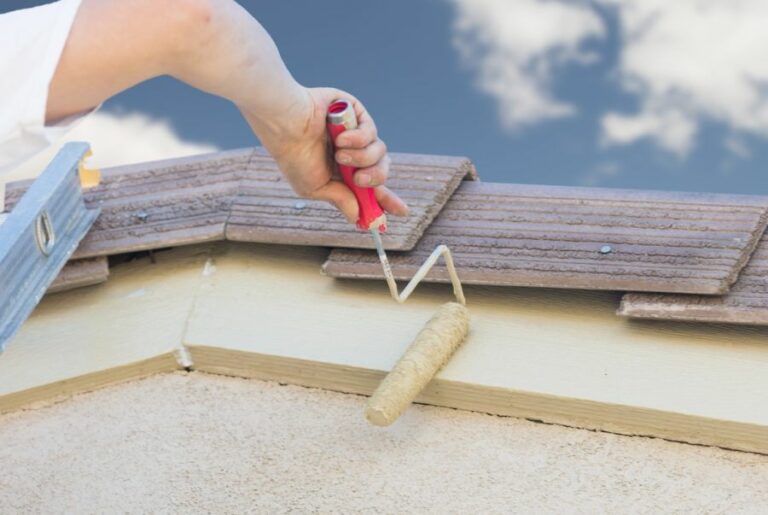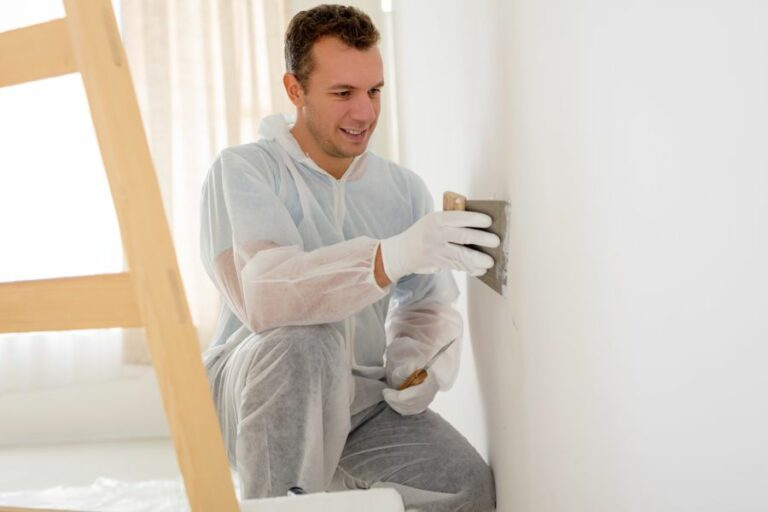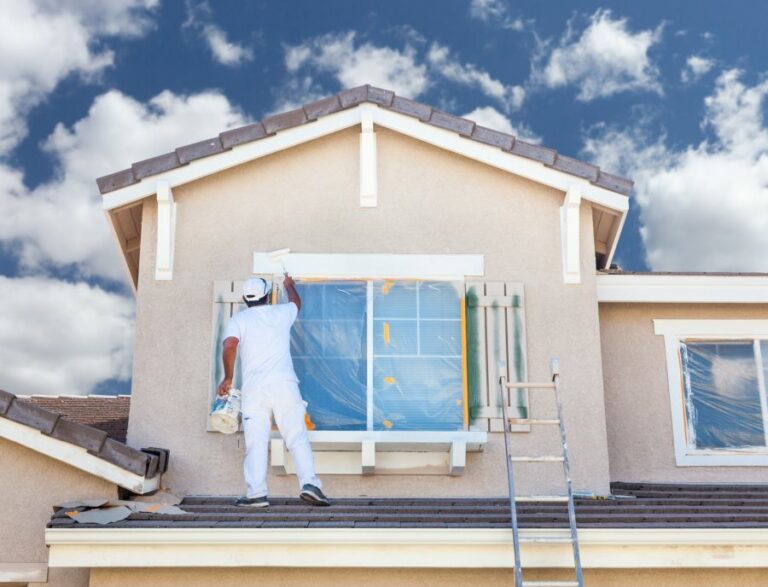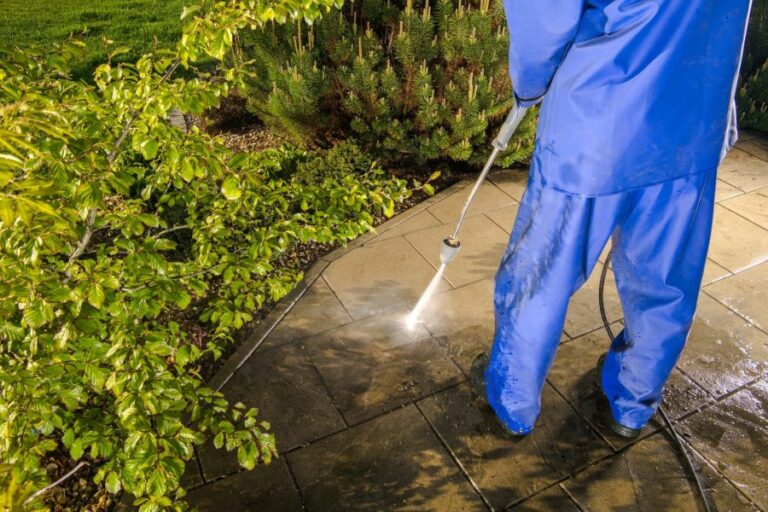Prepping Walls For Painting Textures. What Pros Say
Taking your walls from simple to stunning is easier than you might think. You can transform your space by adding painting textures with the right preparation and techniques. Fear not, because we’re here to guide you every step of the way! Following this article on prepping walls for painting textures, you’ll have all the tools and knowledge necessary to create a beautiful, custom look that reflects your style.
Prepping walls for painting textures:
Prepare walls for textured paint application, assess and repair any wall imperfections, clean the walls with mild soap and water, remove any wallpaper, sand the walls for an even surface, apply a compatible primer, and gather necessary painting tools and supplies. Plan your texture design and apply the textured paint following the manufacturer’s instructions, allowing sufficient drying time.

Master the art of creating beautifully textured walls with this comprehensive guide. Discover essential tools, proper surface preparation, and expert techniques that will make your painted walls truly stand out. Read on to unlock the secrets of achieving professional-level results in your own home.
Contents
- 1 Preparing Walls for Textured Paint Application
- 2 Ready Textured Walls for Painting: A Guide
- 3 Is Sanding Walls Necessary Before Texturing?
- 4 Priming Textured Walls Prior to Painting: Is It Required?
- 5 Steps to Prep a Textured Wall for Paint
- 6 Cleaning Techniques for Textured Walls Before Painting
- 6.1 • Assess the Condition of Your Walls
- 6.2 • Gather Supplies and Prepare Your Workspace
- 6.3 • Remove Surface Dust and Dirt: Vacuuming
- 6.4 • Dry Dusting: Microfiber Cloth Technique
- 6.5 • Wet Cleaning: Detergent-based Cleaning Solution
- 6.6 • Apply the Cleaning Solution: Microfiber Cloth Technique
- 6.7 • Rinse the Walls: Wet Microfiber Cloth
- 6.8 • Drying the Walls: Air-dry Technique
- 6.9 • Inspect the Walls and Address Any Remaining Issues
- 6.10 • Final Thoughts: Prepare For the Best Possible Paint Job
Preparing Walls for Textured Paint Application
Painting textures on walls is a creative way to add character and dimension to any room. However, before you dive into this project, it’s crucial to properly prepare your walls for the best results.
• Assess Your Walls
Start by visually inspecting your walls for any cracks, holes, or other imperfections. Textured paint will not only highlight these flaws but also make them more challenging to fix later. Repair any damage before proceeding.
• Clean Your Walls
Before painting your walls, it’s essential to ensure they are clean and free of dust, dirt, and grease. This will help the paint adhere better and reduce the risk of any unwanted textures.
- Give your walls a thorough wipe-down using a solution of mild soap and water. Be sure to reach every corner and edge.
- Allow the walls to dry completely before moving on to the next step.
• Remove Wallpaper
If your walls currently have wallpaper, it’s crucial to remove it before applying textured paint. You can find a detailed guide here on how to remove wallpaper effectively.
• Sand Your Walls
Sanding is essential for achieving a smooth, even surface suitable for textured paint. Use sandpaper with grit between 100 and 120 to cover all wall areas. Be thorough, as any missed spots can result in an uneven final texture.
Once you’ve finished sanding, vacuum the walls and surrounding area to remove all traces of dust. Don’t forget to cover vents and electrical outlets to prevent dust from getting inside.
• Prime Your Walls
A high-quality primer is necessary to ensure the paint adheres well and lasts longer. Choose a primer that is compatible with both your wall material and the type of textured paint you plan to use.
- Mix the primer well, and pour it into a paint tray.
- Apply the primer evenly onto the wall using a roller or brush. Don’t forget to cover any brush strokes or paint drips.
- Allow the primer to dry completely, following the manufacturer’s recommended drying time.
• Prep Your Painting Tools and Supplies
Before diving into painting textures, gather the necessary materials and tools to make the process run smoothly. Here’s a list of suggested items:
- Textured paint: Choose a paint specifically designed for creating textures on walls, ensuring it’s compatible with your wall material.
- Paint tray: To hold and distribute the paint.
- Painting tools: Depending on the texture style you wish to create, you may need special tools like a sponge, brush, or trowel.
- Drop cloths: To protect the floor, furniture, and any other items in the room.
• Plan Your Texture Design
With everything prepped and ready to go, it’s time to plan your desired texture design. Consider the size of the room, the natural light, and the existing decoration when choosing a texture. You may want to practice on a spare piece of drywall or cardboard to get a feel for the technique before committing.
Once you have a plan and feel confident in your technique, you’re ready to begin painting textures on your walls.
To create a truly unique and customized space, consider combining different texture techniques. For instance, you could apply a combed texture to the majority of the room and then incorporate a stenciled design as a focal point.
• Apply Your Textured Paint
Follow the manufacturer’s instructions for mixing and applying your chosen textured paint. Remember, it’s crucial to work quickly and efficiently for the best results.
Be sure to maintain a consistent technique and layering method throughout the application to keep the texture even and cohesive. If possible, enlist a friend or family member to help you, especially when working in larger rooms.
• Allow Time for Drying and Curing
Once you’ve successfully applied the textured paint, allow it to dry thoroughly before touching or placing any objects against the walls. Drying time can vary depending on the type of paint, so be sure to consult the manufacturer’s recommendations.
With your walls perfectly prepped and your textured paint applied artfully, you can enjoy your newly transformed space knowing you invested the time and effort in achieving a fantastic result.
Ready Textured Walls for Painting: A Guide
Preparing textured walls for painting can seem like a daunting task, but with the right tools and techniques, it is a manageable process.
• Assessing the Wall Surface
Before you begin, thoroughly inspect the wall surface to identify any areas of damage or uneven texture that may require extra attention during the preparation process. It is essential to address potential issues early, as they can impact the final result.
• Cleaning the Wall
First, remove dust, dirt, and cobwebs from the wall using a soft, dry brush or vacuum cleaner with a brush attachment. Be sure to clean corners and edges thoroughly, as dust and dirt can accumulate in these areas.
Additionally, use a damp cloth to wipe down the walls and remove any remaining dust or dirt. Allow the wall to dry completely before moving on to the next step.
• Repairing Damage or Imperfections
If you notice any holes, cracks, or peeling paint on the wall, these should be addressed before painting. To repair small holes or cracks, apply a premixed patching compound using a putty knife, following the product’s instructions.
For larger areas of damage, consider using a layer of joint compound and mesh tape to make the repair more robust. Scrape away any loose or peeling paint using a paint scraper or putty knife. Once the repairs are completed and dried, sand the area to create a smooth surface for painting.
• Sanding the Wall
Wear protective eyewear and a dust mask, and use a pole sander with medium-grit sandpaper to lightly sand the entire wall. This step helps ensure better paint adhesion by removing any buildup and creating a slightly rough surface for the paint to grip.
Be careful not to over-sand the wall, as this can damage the texture. After sanding, be sure to clean the wall again to remove any residual dust.
• Priming the Wall
Applying primer to the wall before painting is a crucial step in ensuring a smooth, even finish. This also helps to seal any repairs made and keep them from absorbing paint differently than the rest of the wall.
Choose a high-quality primer that is suitable for your wall type and the paint you plan to use. Use a brush to apply primer to trim, edges, and corners, and a roller for the large, flat surfaces.
Allow the primer to dry according to the manufacturer’s recommendations.
• Choosing the Right Paint
Select a high-quality paint that is appropriate for the wall’s texture and the desired finish. For textured walls, it is typically best to use latex paint and opt for a flat or eggshell finish.
These finishes help to minimize the appearance of any imperfections and provide a consistent appearance across the wall’s surface.
• Painting Technique
When painting textured walls, it is essential to use the proper technique to ensure even coverage and a professional result. A “W” or “M” painting technique can help achieve this, as it prevents the buildup of paint in one area, resulting in a more even finish.
To begin, use a brush to apply paint to the wall’s edges, corners, and trim. For the central, flat areas, use a roller with a 3/8-inch or 1/2-inch nap size. Start by painting a 2-foot square using a diagonal “W” or “M” motion, and then fill in the space without lifting the roller from the wall.
Gently roll the roller over the wall to cover any missed spots, and then move on to the next section, slightly overlapping each painted area.
• Drying and Additional Coats
Allow the paint to dry according to the manufacturer’s recommendations. Evaluate if additional coats are necessary, depending on the color and coverage. Add extra coats as needed, allowing the appropriate drying time between each coat.
• Final Tips and Recommendations
By following these steps and recommendations, you can achieve a professional-looking painted finish on your textured walls. Remember that taking the time to properly prepare the walls and using the right techniques will result in a smooth, even finish for your home.
- Thoroughly inspect and clean the wall before beginning;
- Address any repairs or imperfections before painting.
- Use the proper primer and paint for the wall type and desired finish;
- Apply the paint using the “W” or “M” technique;
- Allow for proper drying times between coats;
- Invest in high-quality tools and materials for the best results.
By taking the time to adequately prepare and paint your textured walls, you can create an interior space that is visually appealing, well-maintained, and sure to impress.
Step | Description |
|---|---|
1 | Clear the room or cover all furniture and floors with drop cloths. |
2 | Inspect the wall for any damage such as cracks, holes, or peeling paint. |
3 | If necessary, repair any damage with patching compound or joint compound, allowing it to dry according to the manufacturer’s instructions. |
4 | Sand the repaired areas to create a smooth surface, blending it into the surrounding texture. |
5 | Wipe down the walls with a damp cloth or sponge to remove any dust or debris. |
6 | Apply a coat of primer to the walls, allowing it to dry according to the manufacturer’s instructions. |
7 | Apply the desired paint to the walls using a roller designed for textured surfaces, using a brush for edges and corners. |
8 | Allow the paint to dry, and apply a second coat if necessary for full coverage. |
Is Sanding Walls Necessary Before Texturing?
• Importance of Surface Preparation
The step of surface preparation is essential to achieve long-lasting and professional-looking results when texturing walls. One crucial element of this preparatory process is sanding.
Sanding helps to remove any unevenness or imperfections on the wall, allowing the texture to adhere properly and uniformly. Neglecting to sand the walls can lead to uneven textures, visible defects, and a lesser bond between the applied texture and the wall.
• Evaluating the Existing Wall Condition
Before diving into the sanding process, it is important to evaluate the existing wall condition. Check for any existing texture, paint, or wall imperfections that need to be addressed, such as cracks, dents, or peeling paint.
In some cases, particularly for minor imperfections, thorough cleaning using a trisodium phosphate (TSP) solution may be sufficient to prepare the surface for texturing.
Furthermore, if the wall is already smooth and level, you may not need to sand it. However, when faced with more prominent flaws, sanding becomes a necessity.
– Dealing with Existing Textures
If you have a wall with a pre-existing texture, it is essential to remove or level it before applying a new texture. This can involve sanding or other techniques, such as scraping or using a chemical stripper, depending on the specific type of texture and its adhesion to the wall.
Sanding helps to reduce the prominence of the existing texture and creates a more uniform surface for a new texture application.
– Repairing Imperfections
Sanding is also beneficial for repairing any imperfections or damages present on the wall surface, such as cracks, dents, or holes.
To address these issues, first, fill them using a joint compound or spackling paste. After allowing the filling material to dry completely, use sandpaper to smooth out the repairs and blend them into the surrounding area.
This not only ensures a level surface for the texture but also enhances the overall appearance of the finished wall.
– Removing Glossy Paint
Another situation where sanding becomes necessary is when dealing with a wall coated in glossy paint. Glossy surfaces inhibit the adhesion of the new texture, causing it to peel or not bond correctly.
To resolve this issue, sand the glossy paint to create a slightly rough surface, allowing the texture to adhere properly.
• Sanding Techniques and Tools
– Choosing the Right Sandpaper
Selecting the appropriate sandpaper is crucial to achieve the desired result. Sandpapers come in different grit sizes, with lower numbers indicating coarser grits and higher numbers representing finer ones.
I recommend starting with medium-grit sandpaper (around 100 to 120 grit) to sand the wall evenly and remove any significant defects. If the surface feels too rough after using medium-grit sandpaper, follow up by lightly sanding it with a finer grit (180 to 240 grit) to ensure a smoother finish.
– Sanding Tools
There are several tools available to aid the sanding process, including sanding blocks, sanding sponges, and pole sanders. Sanding blocks and sponges are great for small repairs or shorter wall sections, while pole sanders help reach higher areas on the wall and are useful for larger projects.
– Safety Precautions
Sanding walls can produce a large amount of dust and debris. To protect yourself and stay safe during the process, wear protective gear such as goggles, a dust mask, and gloves. Also, keep the workspace well-ventilated to prevent inhaling harmful particles.
• Preparing the Wall for Texturing
After sanding, it is necessary to thoroughly clean the wall to remove any lingering dust or debris. Wipe the surface with a damp cloth or sponge and allow it to dry completely.
If you found it necessary to use a TSP solution earlier, follow the manufacturer’s directions to rinse it off and let the wall dry before proceeding.
– Priming the Wall
Before applying the texture, it is recommended to apply a primer to the wall, especially if you performed significant repairs or if the wall previously had a glossy paint finish. Priming not only helps with adhesion but also creates a more uniform surface for the texture.
Choose a primer compatible with the texture material you plan to use, and follow the manufacturer’s instructions for proper application.
• Conclusion
In conclusion, sanding walls before texturing is not always necessary but can prove to be a crucial step in various situations. Achieving a uniformly smooth, level, and clean surface is the key to professional-looking and long-lasting texture application.
By taking the time to properly evaluate the condition of the walls, sand as needed, and adequately prepare the surface, you will significantly increase the chances of a successful texturing project.
| Do you have to sand walls before texturing? | |
|---|---|
| Sanding before texturing | It depends on the condition of the walls and the type of texture being applied. If the walls have imperfections or existing texture that needs smoothing, then sanding is necessary. However, if the walls are in good condition, you may not need to sand before applying the new texture. |
Priming Textured Walls Prior to Painting: Is It Required?
The short answer to this question is yes. It is highly recommended to prime textured walls before painting. Priming is an essential step in the painting process, especially when dealing with textured surfaces.
• Why is Priming Important for Textured Walls?
Textured walls have an uneven surface, which makes the application of paint more challenging. Priming helps to:
- Create a smooth surface: Priming fills in small gaps and depressions, making the surface smoother and the paint application more even.
- Ensure better adhesion of paint: A primer helps the paint adhere to the wall more effectively, reducing the chances of peeling and blistering.
- Enhance the paint’s durability: Primed surfaces are less likely to suffer from paint-related issues like cracking and fading, increasing the lifespan of your paint job.
- Improve paint coverage: Priming reduces the amount of paint required to achieve the desired look, potentially saving you time and money on multiple coats.
- Block stains and odors: Some primers can prevent stains and odors from seeping through the paint, ensuring a cleaner and more pleasant living space.
• Choosing the Right Primer for Textured Walls
There are various primers available on the market, each with its benefits and applications. For textured walls, it is essential to select a high-quality primer specifically designed for such surfaces. Some popular options include:
- Acrylic latex primer: This water-based primer works well for most surfaces and is easy to clean up. It offers good adhesion and seals porous surfaces, making it an excellent choice for textured walls.
- Oil-based primer: Although more challenging to clean up, oil-based primers provide excellent adhesion and stain-blocking properties. They work well on textured surfaces and can seal in odors.
- High-build primer: This primer is designed for use on rough or uneven surfaces, filling in any cracks or gaps to create a smooth, even base for painting. High-build primers are available in both water-based and oil-based formulas.
Before choosing a primer, consult the paint manufacturer’s recommendations and ensure that it is suitable for the type of paint you plan to use.
• How to Prime Textured Walls
Properly priming your textured walls is crucial for achieving a professional finish. Here are the steps for priming textured walls effectively:
– Step 1: Prepare the Surface
Thoroughly clean the walls to remove dust, dirt, and loose debris. Use a vacuum cleaner with a brush attachment or a microfiber cloth.
If necessary, gently wash the walls with a soft sponge and a solution of mild detergent and water, taking care not to damage the texture. Allow the walls to dry completely before priming.
– Step 2: Protect Adjacent Surfaces
Use painter’s tape to cover baseboards, trim, and any areas you want to keep paint-free. Lay drop cloths or plastic sheeting on the floor to catch any drips or spills.
– Step 3: Apply the Primer
Using a brush, apply a thin coat of primer to the edges of the wall and around any fixtures or trim. Next, use a roller with a thick nap (3/4 inch to 1 inch) to apply the primer to the rest of the wall. The thick nap will help the primer get into the texture’s crevices.
Work in small sections, rolling in a “W” pattern for even coverage. Allow the primer to dry according to the manufacturer’s instructions, usually 1 to 4 hours.
– Step 4: Inspect the Surface
After the primer has dried, inspect the wall for any missed spots or uneven areas. If required, lightly sand the primer to create a smooth surface. Wipe away any dust with a microfiber cloth before moving on to painting.
• Final Thoughts
Priming textured walls before painting is an essential step to ensure a professional, long-lasting finish. By selecting the appropriate primer and following the proper priming techniques, you’ll save time, and money and achieve better results in your painting projects.
| Answer | |
|---|---|
| Yes | Priming a textured wall before painting is important to ensure proper adhesion of the paint, even coverage, and a longer-lasting finish. A primer will also help to seal the surface, reduce the absorption of paint, and hide any existing stains or color variations. |
Steps to Prep a Textured Wall for Paint
• Introduction
Painting a textured wall can seem complicated at first, but with the right knowledge and tools, you can achieve a professional-looking result.
• Tools And Materials
Before beginning, gather the following materials and tools:
- Cleaning supplies soft cloth or sponge, mild soap, water
- Drop cloth
- Protective gloves, eyewear, and mask
- Sanding block or pole sander for larger areas
- Medium-grit, fine-grit, and extra-fine-grit sandpaper
- Vacuum cleaner
- Tack cloth
- Painter’s tape
- Filling compound or joint compound for patching wall imperfections
- Broad putty knife
- Primer
- Paintbrush or paint roller
- Paint of your choice
• Cleaning The Surface
The first and crucial step is to clean the textured wall surface. The presence of dust, dirt, and grease can hinder paint adhesion and result in an uneven finish. To clean the wall, use a soft cloth or sponge and a mild soapy solution to scrub the surface gently.
For particularly stubborn stains, you may consider using a sugar soap solution specifically designed for cleaning painted surfaces. After washing, make sure to rinse the wall with clean water to remove any soap residue and then allow it to dry completely before proceeding.
• Sanding The Surface
The goal of sanding is to create a smooth and even painting surface. On textured walls, this step can prove a bit more challenging due to the irregularities in the surface. To begin sanding, equip a sanding block or pole sander with medium-grit sandpaper and lightly sand the entire wall.
With textured walls, focus on smoothing any rough areas rather than trying to create a perfectly flat surface. Afterward, switch to fine-grit sandpaper and then extra-fine-grit sandpaper, which will help eliminate visible sanding marks and further smooth the wall surface.
When sanding, always wear protective gloves, eyewear, and a mask to prevent inhaling dust particles. It’s also essential to work in a well-ventilated area to reduce dust concentration.
Upon completing the sanding process, use a vacuum cleaner to remove excess dust from the wall and follow with a tack cloth to ensure a dust-free surface.
• Repairing Imperfections
Now that you’ve effectively cleaned and sanded the wall, evaluate its surface for any imperfections such as small holes, cracks, or blemishes.
If any repairs are necessary, use a broad putty knife to apply a filling compound, such as joint compound or a similar product, to the affected areas.
Follow the manufacturer’s instructions for drying times and sand the repaired areas with fine-grit sandpaper to ensure a smooth finish. Wipe the wall with a tack cloth again after sanding to remove any dust.
• Protecting Adjacent Surfaces
Before applying primer or paint, take the time to mask off any adjacent surfaces that do not need painting, such as baseboards, trim, and electrical outlets.
Use painter’s tape to create a clean, sharp edge where the paint will stop. Be sure to cover the floor with a drop cloth to protect it from any accidental paint splatters.
• Priming The Surface
Before painting the wall, it’s important to apply a coat of primer, especially if the original paint color is dark or vivid. A good quality primer helps to create a consistent base for paint adherence, ensuring a smoother and more uniform finish.
Apply the primer using a paintbrush or paint roller, following the manufacturer’s instructions for drying time.
• Painting The Surface
Once the primer is completely dry, you are ready to paint the wall. Choose a quality interior paint and apply it using a brush or roller, working in small sections and maintaining a wet edge to avoid visible lap marks.
Paint the wall in two to three coats or until the desired opacity is achieved, allowing the paint to dry in between each coat according to the manufacturer’s recommendations.
• Conclusion
Preparing a textured wall for painting can be a time-consuming process, but with proper planning and execution, the results will be well worth the effort.
By following the steps outlined above, you’ll be on your way to a beautifully painted, textured wall that will enhance the aesthetics and atmosphere of any room.
Step | Description |
|---|---|
1. Clean the wall | Remove dirt, dust, and cobwebs from the wall using a vacuum or a soft-bristled brush. |
2. Repair any damages | Examine the wall for any cracks, holes, or imperfections and fix them using a joint compound or spackling paste. Allow it to dry and sand the surface if necessary. |
3. Sand the wall | Use a sanding block or a pole sander with fine-grit sandpaper to lightly sand the wall. This will remove any loose debris and create a better surface for the paint to adhere to. |
4. Prime the wall | Apply a coat of primer specifically designed for textured surfaces. This will help create a uniform base for the paint and improve its coverage. Allow the primer to dry according to the manufacturer’s instructions. |
5. Tape off edges and fixtures | Use painter’s tape to protect baseboards, trim, outlets, and any other areas you don’t want to be painted. Make sure the tape is firmly pressed down to prevent paint from seeping underneath. |
Cleaning Techniques for Textured Walls Before Painting
Cleaning textured walls before painting is an essential step in ensuring a professional-looking paint job. This vital process helps remove dirt, dust, and other debris that can interfere with paint adhesion and the overall appearance of your paint job.
• Assess the Condition of Your Walls
Before starting, take a moment to examine your walls for any signs of damage, mold, or mildew. Addressing these issues before cleaning and painting is crucial to the success and longevity of your paint job. Fix any damages or treat mold and mildew with the appropriate cleaning solutions and techniques.
• Gather Supplies and Prepare Your Workspace
To clean textured walls effectively, gather the following items:
- Vacuum cleaner with brush attachment
- Microfiber cloths
- Bucket
- Mild liquid detergent
- Trisodium phosphate (TSP) optional, but recommended for heavily soiled walls
- Rubber gloves
- Goggles
- Protective wear, such as a mask or apron
- Drop cloths or plastic sheeting
Before cleaning, remove or cover any furniture or belongings near the walls. Protect your floors with drop cloths or plastic sheeting.
• Remove Surface Dust and Dirt: Vacuuming
Start by vacuuming your walls using a soft brush attachment. This removes loose dust and dirt that tends to accumulate over time, especially in textured surfaces where debris can get trapped.
Pay close attention to corners, edges, and intricate details. Take your time and be gentle, as rough vacuuming can damage delicate textures.
• Dry Dusting: Microfiber Cloth Technique
After vacuuming, use a dry microfiber cloth to gently wipe the walls, following the texture pattern. The static created by the microfiber cloth will help attract and lift any remaining dust particles. Dispose of dirty cloths and replace them with clean ones as necessary.
• Wet Cleaning: Detergent-based Cleaning Solution
In a bucket, mix a mild liquid detergent with warm water. A good starting ratio is one teaspoon of detergent per gallon of water. If your walls are heavily soiled, consider using a stronger cleaning solution, such as trisodium phosphate (TSP).
TSP is a heavy-duty cleaner that effectively removes grease, grime, and stains. Follow the manufacturer’s instructions for the appropriate mixing ratio.
Note: Before using any cleaning agent, test it in an inconspicuous area of the wall to check for any adverse reactions, such as discoloration or damage.
• Apply the Cleaning Solution: Microfiber Cloth Technique
Dip a clean microfiber cloth into the cleaning solution, wring out the excess liquid, and gently wipe the walls’ surface. As you work, follow the texture pattern, and be cautious not to saturate the walls.
Overwetting can cause damage to the drywall or underlying materials. Dispose of dirty cloths and replace them with clean ones as needed.
• Rinse the Walls: Wet Microfiber Cloth
After cleaning the walls with the detergent solution, use a fresh, damp microfiber cloth to rinse the walls. This removes any cleaning agent residue and helps prevent streaking. Wring out the cloth frequently to ensure you are using clean water for rinsing.
• Drying the Walls: Air-dry Technique
Allow the walls to air-dry completely before proceeding with painting. Depending on the climate and humidity levels, this can take anywhere from a few hours to a day or more. Be patient and plan accordingly to ensure your walls are completely dry before starting your paint job.
• Inspect the Walls and Address Any Remaining Issues
Once the walls are completely dry, inspect them for any remaining dirt, grime, or damage. If necessary, repeat the cleaning process or address any issues before proceeding with painting. This is also a good time to ensure all wall repairs have been completed and properly primed.
• Final Thoughts: Prepare For the Best Possible Paint Job
Cleaning textured walls before painting is a vital step in achieving a professional, long-lasting paint job. Preparing your walls and workspace, using appropriate tools and techniques, and allowing adequate drying time will ensure successful paint adhesion, and a smooth, even finish.
Remember to address any concerns, such as damage or mold, before starting this process. With attention to detail and patience, your cleaned and painted textured walls will be a significant upgrade to your home or space.
How do you clean textured walls before painting?
Step | Description |
|---|---|
1 | Remove dust and cobwebs using a vacuum cleaner with a brush attachment or a microfiber duster. |
2 | Make a cleaning solution by mixing a few drops of mild dish soap with warm water in a bucket. |
3 | Dampen a soft sponge or cloth in the cleaning solution and wring it out well to prevent dripping. |
4 | Starting at the top corner of the wall, gently scrub the wall in a circular motion, working your way down and across the wall. |
5 | Rinse the sponge or cloth in the cleaning solution frequently to remove dirt and grime. |
6 | After cleaning the entire wall, use a clean, damp cloth or sponge to wipe the wall to remove soap residue. |
7 | Allow the wall to dry completely before painting, typically 24 hours. |







